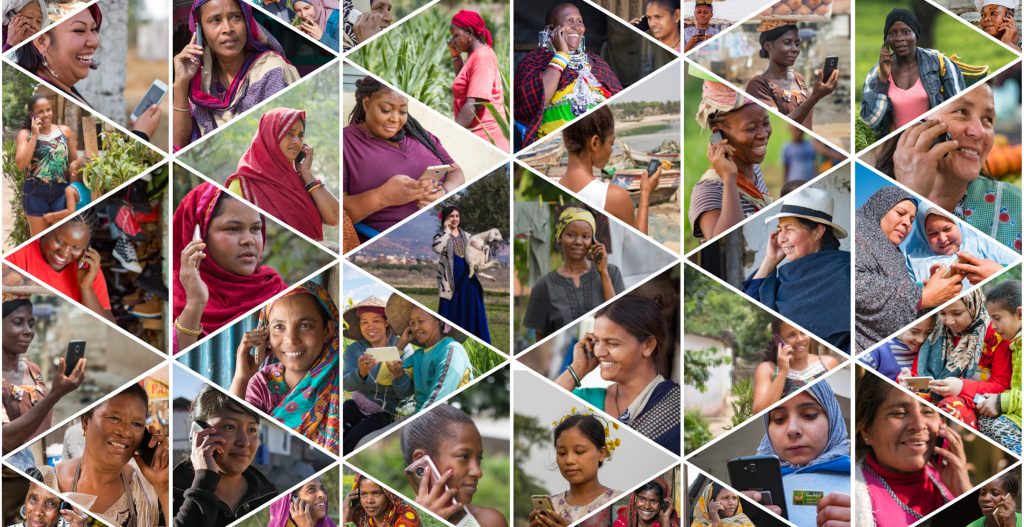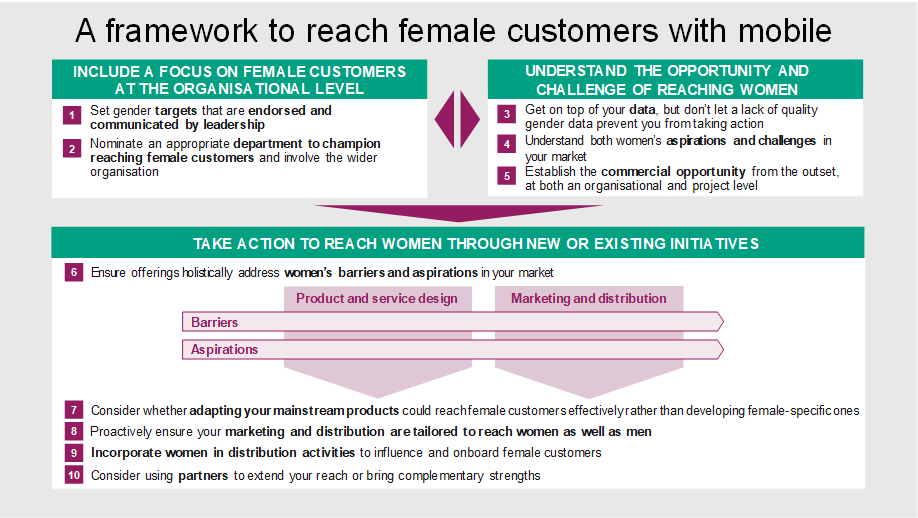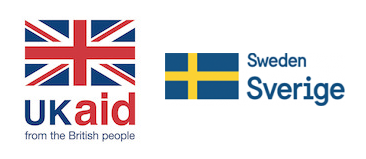Relevant for mobile operators, policymakers, the development community and other stakeholders who are seeking to reach women with mobile products and services in low- and middle-income countries.

How can mobile operators reach women with mobile across low- and middle-income countries?
In today’s world, this question is more important than ever. COVID-19 and resulting lockdowns have placed an increased burden on women – who have taken on the bulk of the increased care work, childcare and home schooling. At the same time, the pandemic has amplified the potential role of mobile technology to support women take on these roles, keep informed, stay connected, and continue their businesses and their lives. Despite these benefits, women continue to have much lower access than men to mobile handsets and services. Our new figures show that across low- and middle-income countries (LMICs), women are still 7% less likely than men to own a mobile phone, and 15% less likely to use mobile internet. It is tragic that women across LMICs are missing out on being connected at the very point in time they perhaps need it most.
So how can mobile operators – as well as other stakeholders – reach women with mobile handsets and services across LMICs? To answer this question, we have developed our top 10 recommendations. These are based on everything that we have learned over the last decade of our Connected Women programme, through conducting research and working with operators and other stakeholders across Africa, Asia and Latin America:
- Set gender targets that are endorsed and communicated by leadership. Setting a tangible, numeric target for reaching female customers helps align, focus and inspire the different parts of the organisation around a concrete ambition. It is even more impactful if this target is championed by senior leaders.
- Nominate an appropriate department to champion reaching female customers and involve the wider organisation. Collaboration across departments is crucial, since reaching female customers as well as men involves many different parts of the business (e.g. product design, marketing, business reporting).
- Get on top of your data, but don’t let a lack of quality gender data prevent you from taking action. It is important to ensure existing gender data is fully utilised, and improve the underlying availability and accuracy of data (e.g. machine-learning).
- Understand both women’s aspirations and challenges in your market. There are 5 common barriers preventing women across LMICs from accessing and using mobile technology: lack of affordability, relevance, knowledge and skills, access to handsets and other enablers, and safety and security issues.
- Establish the commercial opportunity from the outset, at both an organisational and project level. While it is important to consider the social impact on female customers, without a business case, the scale and sustainability of resulting activities are likely to be constrained.
- Ensure offerings holistically address women’s barriers and aspirations in your market. The key barriers and aspirations that women face in your market should be considered at all stages of design, marketing and distribution of your mobile offerings.
- Consider whether adapting your mainstream products could reach female customers effectively rather than developing female-specific ones. You do not have to design female-specific products and services to reach women effectively. In fact, most of the offerings that are successfully attracting female customers at scale are not designed exclusively for women, but are mainstream (non-gender specific), and either purposefully consider women’s specific needs in the design, or naturally appeal to women disproportionately (e.g. savings products; low-cost handsets).
- Proactively ensure your marketing and distribution are tailored to reach women as well as men. Operators that do not purposefully consider reaching women as well as men during marketing and distribution activities are likely to inadvertently exclude many potential female customers. Standard mass marketing approaches typically reach more men than women, and speak to men and their aspirations more than women. Similarly, without proactive efforts to the contrary, distribution networks tend to be male dominated.
- Incorporate women in distribution activities to influence and onboard female customers (e.g. female agents, female merchants, local female influencers). In many settings, women are more likely to trust and feel comfortable talking to other women, especially where the role of men and women are very different.
- Consider using partners to extend your reach or bring complementary strengths. Operators are successfully partnering with a variety of organisations to reach women with mobile handsets and services, including other industry players, banks, NGOs, research agencies and governments.
Our 10 recommendations are presented in a summary framework approach, which has 3 parts to it (Figure 1): recommendations related to your organisation (the top left box), recommendations related to understanding the opportunity and challenge of reaching women (the top right box), and recommendations related to actually taking action (the bottom box).

Figure 1
While our top 10 recommendations are based on our experience working closely with mobile operators, we anticipate they will also be useful for other organisations offering mobile-related products and services to women in these settings, including other industry players, policymakers, NGOs and the development community.
It’s really crucial that all of us – as different stakeholders – take action and work together to address this issue and realise this important opportunity. Only through collaborating can we ensure that women are no longer left behind.
To read more about our top 10 recommendations and how operators are putting them into practice, visit our new webpage and download our full report ‘Reaching 50 Million Women with Mobile: A Practical Guide’.

This initiative is funded by UK aid from the UK government and by aid from the Swedish International Development Cooperation Agency (SIDA), and is supported by the GSMA and its members. The views expressed do not necessarily reflect the UK or Swedish governments’ official policies.


